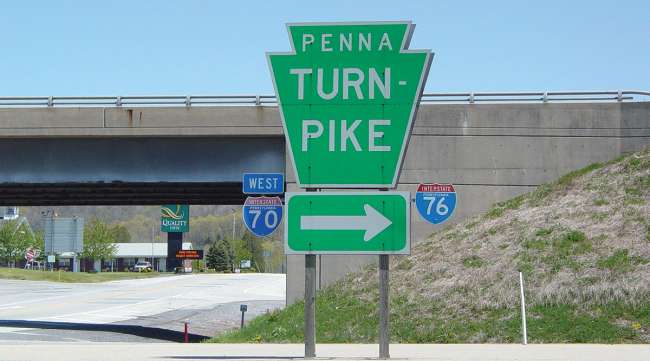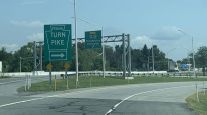Staff Reporter
Toll Rates Increase on Pennsylvania Turnpike, New York-New Jersey Crossings

[Stay on top of transportation news: Get TTNews in your inbox.]
Tolls rates recently have increased on the Pennsylvania Turnpike and the crossings that link New Jersey and New York City.
The Port Authority of New York and New Jersey increased toll rates on the Lincoln and Holland tunnels, the George Washington, Bayonne and Goethals bridges and the Outerbridge Crossing. The Pennsylvania Turnpike Commission instituted a 6% toll rate increase on the route. Both toll rate hikes went into effect Jan. 5.
Tolls on the tunnels and bridges are collected from vehicles entering New York City; no tolls are collected from those entering New Jersey. In Pennsylvania, the toll rate increase applies to the entire turnpike. The bulk of the 360-mile turnpike runs east-west along Interstate 76, spanning from Philadelphia to the Ohio state line. The toll road also has two large offshoots, one north of Philadelphia along I-476 and the other south of Pittsburgh along state Route 43.
The Port Authority of New York and New Jersey’s toll increase is tied to inflation, while the Pennsylvania Turnpike Commission’s hike is meant to keep pace with rising debt-service costs.

Hems
Trucking Association of New York President Kendra Hems expressed frustration with the increase. She pointed out the lowest toll rate a 5-axle truck will encounter, traveling overnight with an E-ZPass during the week, is $82.50. That same vehicle would be tolled $95 for the same trip if it traveled with an E-ZPass during peak hours. The highest toll it would face would be the cash rate, which is $110 for 5-axle vehicles.
Hems mentioned the new toll rates would financially hit consumers, as many carriers in New York are small businesses.
“They certainly can’t afford to just absorb those costs, so they have to pass them on,” Hems said. “It’s just getting more and more cost prohibitive to operate in New York and particularly into New York City.”
Plans for congestion pricing in Manhattan still hang in the balance. New York Gov. Andrew Cuomo has outlined plans for electronic tolling devices posted along the perimeter of midtown and lower Manhattan, which the Trucking Association of New York has opposed. Congestion pricing could go into effect in 2021.

Stewart
Kevin Stewart, president of the Pennsylvania Motor Truck Association, said the turnpike’s new rates present a significant financial increase for motor carriers. Under the new rates, a Class 8 truck with 5 axles traveling the entire east-west length of the Pennsylvania Turnpike would be tolled $422 using cash and $293 using an E-ZPass.
The Pennsylvania Turnpike Commission has hiked the toll rate each year for the past 10 years. The toll increase provides the revenue needed to keep up with annual contributions outlined in two state funding laws: Act 44 of 2007 and Act 89 of 2013.
Act 44 required the commission to provide the Pennsylvania Department of Transportation with $450 million a year for highways, bridges and public transit. Act 89 modified the payments, calling for them to be dedicated solely to public transit.
Stewart also said the toll hikes may cause some carriers to divert from the turnpike and rely instead on arterial routes that aren’t designed to accommodate heavy freight vehicles.
“It’s going to hit the turnpike, too, and those carriers are going to look for alternative means to perhaps use roadways other than the Pennsylvania Turnpike or maybe sections of roadways,” Stewart. “The turnpike’s toll increases have a true negative impact on us as an industry.”
Want more news? Listen to today's daily briefing:



